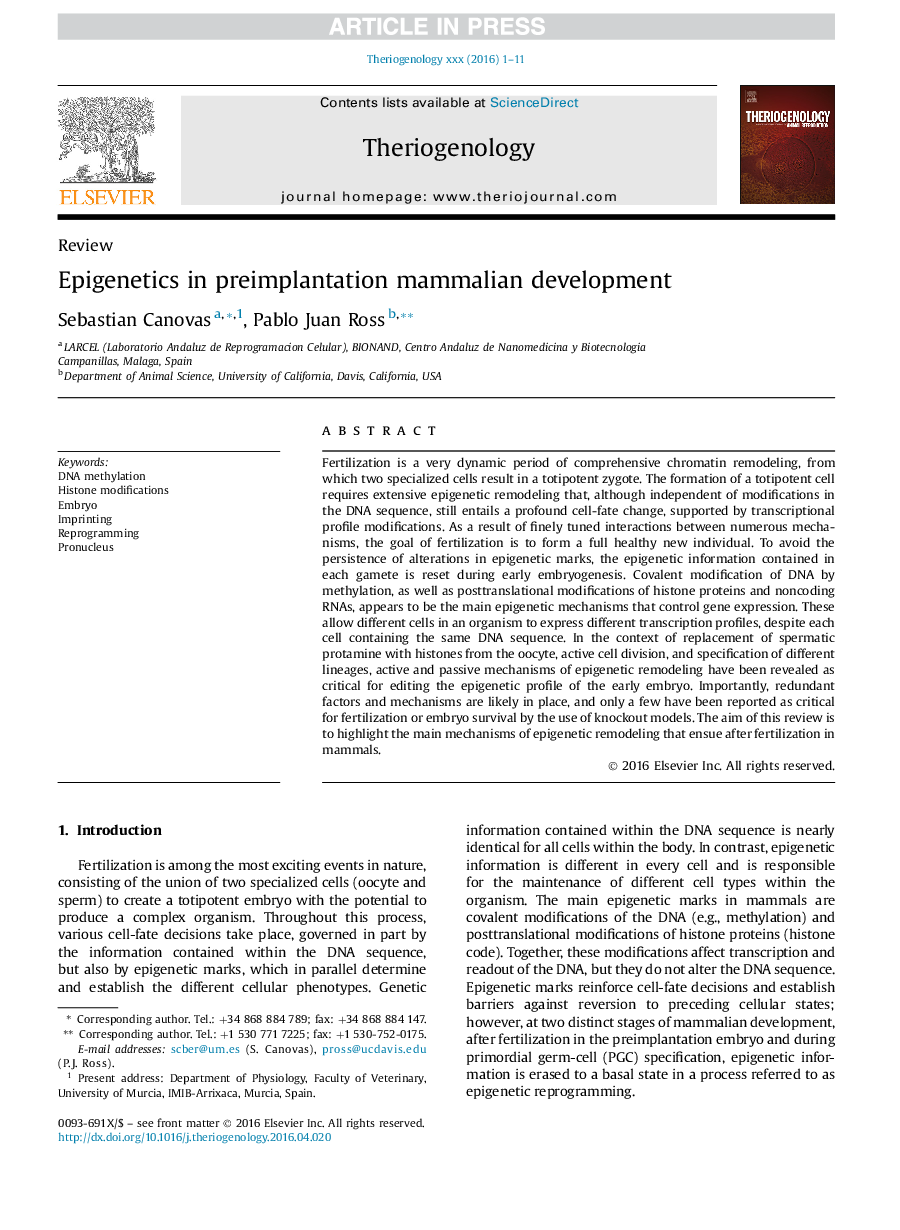| Article ID | Journal | Published Year | Pages | File Type |
|---|---|---|---|---|
| 10891601 | Theriogenology | 2016 | 11 Pages |
Abstract
Fertilization is a very dynamic period of comprehensive chromatin remodeling, from which two specialized cells result in a totipotent zygote. The formation of a totipotent cell requires extensive epigenetic remodeling that, although independent of modifications in the DNA sequence, still entails a profound cell-fate change, supported by transcriptional profile modifications. As a result of finely tuned interactions between numerous mechanisms, the goal of fertilization is to form a full healthy new individual. To avoid the persistence of alterations in epigenetic marks, the epigenetic information contained in each gamete is reset during early embryogenesis. Covalent modification of DNA by methylation, as well as posttranslational modifications of histone proteins and noncoding RNAs, appears to be the main epigenetic mechanisms that control gene expression. These allow different cells in an organism to express different transcription profiles, despite each cell containing the same DNA sequence. In the context of replacement of spermatic protamine with histones from the oocyte, active cell division, and specification of different lineages, active and passive mechanisms of epigenetic remodeling have been revealed as critical for editing the epigenetic profile of the early embryo. Importantly, redundant factors and mechanisms are likely in place, and only a few have been reported as critical for fertilization or embryo survival by the use of knockout models. The aim of this review is to highlight the main mechanisms of epigenetic remodeling that ensue after fertilization in mammals.
Related Topics
Life Sciences
Agricultural and Biological Sciences
Animal Science and Zoology
Authors
Sebastian Canovas, Pablo Juan Ross,
